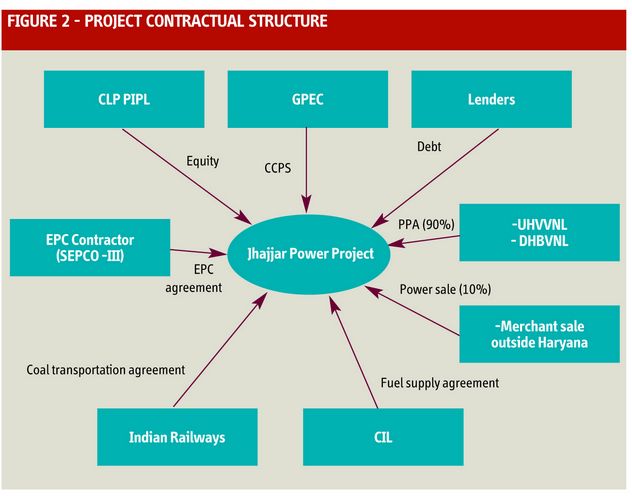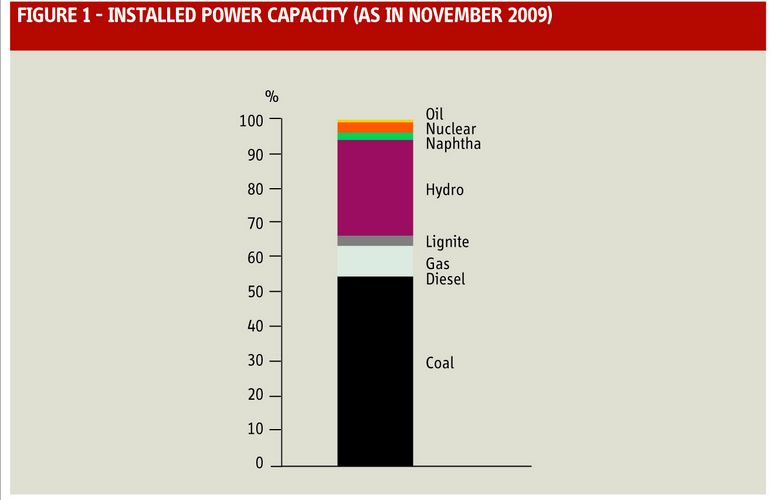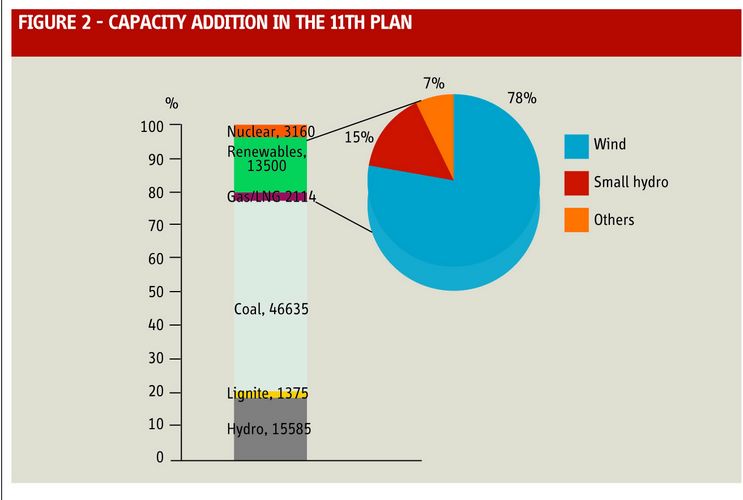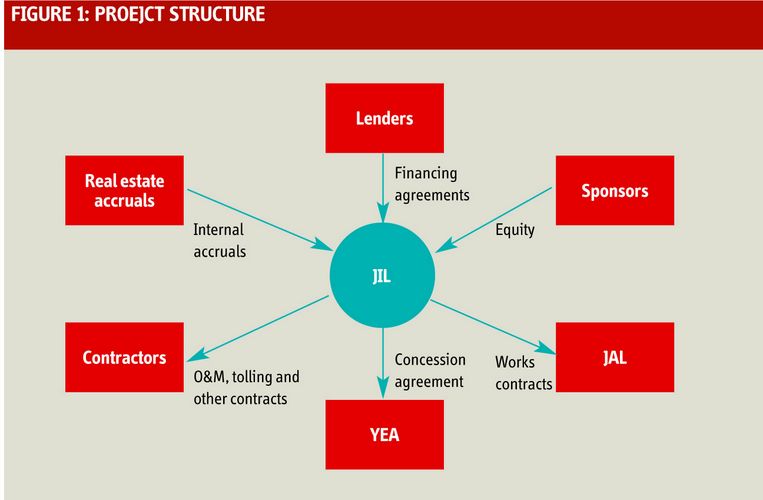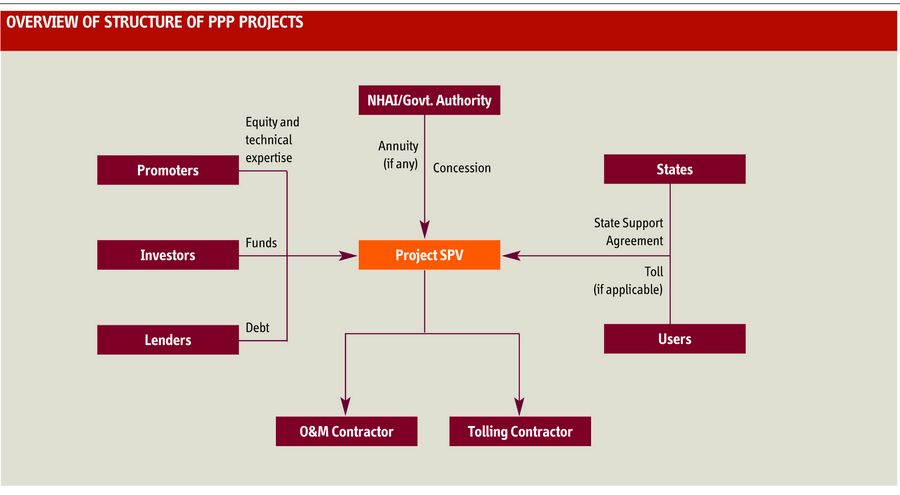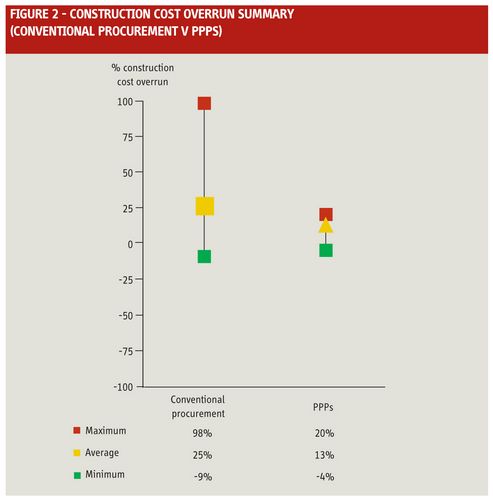IFR: What has happened to volatility and what is the future of convertible issuance in a low volatility environment? Is there any prospect of vol increasing, or are the current conditions simply a return to normality? How has the change in vol affected pricing trends?
Lorraine Lodge (Nomura International): Volatility has become a four-letter word in our market. Whether you think it is an aberration or a return to normality all depends on what timeframe you look at. I mean, you could go back over the last five years and think, "This is an aberration, we’ll get higher volatility", or you can look at the very long-term average, the 93–94 level, and say, "This is where it is at".
Either way, to make money in this market we think investors do need to look at alternative strategies. For the time being, convertible arbitrage looks like a money-losing proposition, especially in Europe. Low vol has pervaded Japan and Asia as well, although not as badly, and it seems like we are coming full circle to the outrights idea of convertible investors. So even if arbitrage funds want to take a view, they don’t necessarily try to extract cheapness from the embedded option: they take a directional view, or they take a credit view, or they take a short view. So adopting directional views is becoming more important for the time being.
IFR: We will come on to more of that when we talk about investment strategies. Doug, you wanted to add something on volatility?
Doug Decker (Barclays Capital): Yes, I think one of the interesting things is that when you think about convertible valuations over the last five years, clearly the volatilities have come off. But when you think about a convertible bond, it is 80 to 90 per cent bond and 10 to 20 per cent equity option.
So even though volatilities have come off, market conditions overall for convertible issuance in terms of value – if you want to reflect the value in terms of coupon – are better than they’ve been in years. This is because of the tightening in credit spreads and the dramatic drop in interest rates, both of which have more than offset the drop in volatility.
One of the things we track on a weekly basis is the average coupon for a triple B issuer in euros. For a convertible with a 40 per cent premium, this coupon has dropped from 4.5 per cent all the way down to 2.5 per cent over the last three years. Right now it’s about three per cent. So for a triple B company that would clearly fund at swaps plus their spread – and that spread might be 50 or 60 basis points – they are able to get sub-swaps or sub-Libor funding because that option still subsidises the value of the funding quite a bit.
Martin Fisch (Deutsche Bank): It’s a good point, but the problem is that actually the reason volatility is important from the issuer’s perspective is that that’s the saving: there is a competitive advantage of convertible bonds versus our colleagues in debt capital markets, and I think the problem with volatility being low right now is that there isn’t much of a competitive advantage because the issuer can go out and get that incredibly cheap funding through a straight bond.
The triple B issuer can go out and get a low, sub-4%, coupon without giving up any upside on his equity. So I think that’s the real problem we have, and I think that ties into the volatility.
Volatility is just one measure of risk. Credit spread is another measure of risk in companies, and right now credit spreads are at ridiculous lows. I think our view is that credit spreads at some point will have to come out. The market is not pricing risk into the system, and volatility, whether in advance or afterwards, will have to follow.
If we look back to the year before last, we actually had a period where equity volatility was very high and credit spreads started tightening, and eventually we saw a correction in the equity markets and volatility dropped. So those things are always twinned, and as long as you believe at some point the credit market will price in more risk, you have to think the equity markets will price in more risk as well.
Manish Wadhwani (HVB): I think you are right on that, looking at triple B and above, but obviously what we have seen in the market from an issuance perspective is a lot of sub-investment grade and unrated issuance.
And if you compare that to the debt side, obviously a lot of those issuers can’t tap the debt market and therefore this is an interesting product for them nonetheless. And I think that ties in with the changing themes: the market has become a lot deeper and has a lot more breadth to it.
I think the other factor is, if you look at comparative valuations on volatility five or ten years ago, pricing at significant discounts to historic levels – or OTC levels for that matter – and I think that’s what led to the hedge fund bubble. And I think now we have seen a lot of transactions most recently pricing very close to OTC levels – Linde was an example.
Viswas Raghavan (JP Morgan): I think a couple of key points: if you draw a graph of share prices and volatility, you notice that the periods of highest volatility corresponded to periods of low share prices. And we’ve seen vols come off when we’ve seen equity prices take off. So from an issuer point of view, it is a zero sum game: they could get a 50 or 60 per cent premium off a very low base or they can get a 30 per cent premium off a much higher base. So net-net, if they have an opportunity cost of equity in mind, and a price at which they want to issue equity, they can be persuaded that you could have done a convertible in that heady market and your share price was where it was then, but you would have been no better off than doing a convertible now and getting a corresponding premium.

I think the better point is what Manish highlights, and that is if you look historically, there was always a haircut to vol. So effectively a historic vol, an OTC vol, and a convert vol, it was almost four vol points or six vol points of skew between each of those. If you look at most recent deals, they are coming at half historic – or if you take the Swisscom serial deals, every one of them has been priced through OTC, through historic. It does not work always – and it hasn’t, as we know – but there are cases where you can push the envelope and you can get there.
And the third point is really how the market is migrating – and that is where I come back to Lorraine’s point, that you have the outright view of convertible funds just coming back in. There is almost a volatility balance: so effectively you are not saying: “Issuance out of Asia more than offset the issuance out of Europe”.
If you look at most of the Asian names, they were super-volatile but always priced with a 93 or a 94 bond floor. And people are taking a punt that, yes, as vol comes up I will lighten or tighten my delta, but until that point in time I am taking a view that these markets are going to go one way. So I take a directional view on the stock.
IFR: We are moving inevitably to investment strategies: given the dearth of supply and the fact that volatility is no longer the driving force behind issuance, what are investors looking for? Franck, do you want to talk a little about the feedback you are getting?
Franck Cazaubieilh (BNP Paribas): The feedback is quite diverse, I would say. Obviously – and I think it is in line with what you said before – there is some sort of fragmentation in terms of strategy. What people used to do was basically some sort of arbitrage on volatility. It has not completely disappeared, but today it is probably not the majority. So on our side, it is quite tough to say exactly what investors are looking for, because there is on the one hand a real scarcity in terms of new issues; we have a lot of redemptions on the other hand, at least in Europe; and at the same time, these people need to reinvest their money.
They cannot do it through the usual arbitrage strategies they used to do in the past, so I think it is very opportunistic, and it depends a lot on the profile of the products. When you have issues like the one we had with France Telecom, for instance, which is quite classical as per the standards we had, they would do an arbitrage, but when you have some small-caps or mid-caps issuing, it is probably a pure directional position. Between the two extremes you might have in-between situations.

Antoine de Guillenchmidt (Merrill Lynch): I would add that 2004 was a year where a lot of the arbitrageurs lost money on playing the simple convertible arb that Lorraine was mentioning before. So at the end of the day, if you offer them a directional view or a credit play, probably sooner rather than later we are going to see mid-caps that we have seen in the US, and if the European market matures, we are going to have more of those, away from the arb vol play . . .
Wadhwani: . . . plus a lot of capital structure arbitrage. You have had a lot of serial issuance from corporates in the last couple of years issuing equity, then a high-yield, then a convertible, or combined packages – like ABB or Jenoptik – and you’ve got a lot of play between those names, coming back to Lorraine's point on credit plays, playing off the high-yield against the convert, and all that sort of arbitrage between the different credit and equity portions on the name.
IFR: Lorraine, you were talking about this at the start. Is there anything you want to develop further on that? For example, what kind of plays are you recommending?
Lodge: Well, there are a lot of structural plays as well. To follow up on what Manish just said, ABB actually did change the terms of its convertible bonds, so the conversion terms were only into the ADRs, rather than ADRs or ordinaries, and to do that they needed to sweeten the terms to get a vote. The precise details of what those terms were when the vote passed were not that widely disseminated, and it came at a time when many of our investors were dismayed in general by the European convertible market.
So renewed interest in bonds like that actually proved pretty profitable when you start to look at what issuers have done to their bonds, or what terms they might change. For instance, many issuers may want to repeat what Publicis did and sweeten the terms of a bond or offer a swap, and you start looking at those names if new issuance is not a fertile ground to examine. You start looking at names like EMI or Lukoil. They are at 150 or 160, and they are not that old. It starts looking pretty good if you actually went in and took a view.
IFR: So does that mean that despite the lack of money that can be made from typical convert arb, investors are staying in the market but looking for different strategies?
Decker: It comes back to the redemptions as well, because we have had such a high number of redemptions of bonds issued in 1999 and 2000, a tremendous amount of cash has come back to these dedicated convertible funds, and rather than separate the bond portion from the option portion or enter into trades which reduce the capital requirement, they are just deploying the capital that they have in these strategies.

So in the last few deals we have done, we have seen no trading in the asset swaps, the CDS or the stock. It is very much a long-term directional view, but it also comes back to the bond value as well. For these types of trades people want to see a bond value of 95, 96, 97, so that their risk on the downside is only a couple of points of option value, and I think that may be a trend that persists this year, especially for companies where the underlying shares are not terribly liquid.
Raghavan: Going back to how the arbitrage strategy is not working, I think the focus for all of these guys is: where do I make money? They are seeing a lot of interest in yielding securities, and we have seen more mandatories recently, and that has really been driven by yield carry. Whatever benefit we can get, these guys tend to like it. They do not even mind subordination or long-dated: the more the yield the better, and I think the carry is a huge driver in terms of these guys.
Wadhwani: I think to add to that, a lot of the names that we are talking about are sub-investment grade and lower down the credit curve and so on, and I think (a) you are getting the credit and the high yield play through the coupon and the yields, and (b) you are getting obviously an option on the equity, which in this case is potentially a cheap option. As an outright fund, you are still buying into the equity on a five or seven-year term view, which is probably what you are looking to do anyway, gaining exposure to that kind of a company...
Raghavan: . . . and they are even happy buying South African Rand paper, even exotic currencies etc, that you had not thought of. People are happy buying that purely because the yield is just so attractive, and that is the best way to compensate for lack of return.
IFR: Let’s move on – since we are going that way anyway – to structural innovation. Recent months have seen features such as the return of the index-linked bond, another attempt at warrants, a successful debut Uridashi issue, and a flurry of bank-issued exchangeables. What is the scope for innovation in the European equity-linked market and what will drive this innovation? Stephan, last month you produced what one could probably call an innovative combination transaction . . .

Stephan Theissing (Allianz): This comes back to Doug’s point: what we as issuers like is investors that do not arbitrage the bonds. We like investors that see convertibles as a special asset class and are long the bonds, that is obvious, because that allows us to split our investor base into several parts, and one of these is convertibles and we can do other deals with other parts of the market. So this trend is actually quite beneficial to us.
Coming back to the index-linked bond, this is an issue that has always presented the question: ok, what is the best investor base for what sort of funding needs? The index-tracking investor is a special class of investor, which gets neglected with other products. So if you can develop a product and are happy to tap into this market, you can try to get some special advantages out of it. This is the reason – so it means separation of buckets of money and then trying to construct a product that fits into this bucket.
IFR: Viswas, JP Morgan was instrumental in the Allianz deals. What are your thoughts?
Raghavan: I think firstly there is a misnomer here: innovation never happens in a vacuum. You have a mindshare with a client and you have a common set of objectives you want to solve. Effectively it is a question of ticking boxes and coming up with something that meets corporate finance objectives, and that was the rationale behind the Allianz thinking, the Fortis FRESH, the Opera notes, whatever. There has always been a set of boxes that needed ticking and a set of objectives that needed to be met.
As far as the market goes and as far as we banks go, the market is so commoditised now that I would split the market into two. One is the innovative high-end spectrum and the other is the commodity-end spectrum. Between the two, it is the innovative stuff where margins are still okay, whereas on the commoditised stuff you are finding that it is always put to auction, where usually the risk of failed deals and debacles is higher, and then there is egg on everybody's face as a result of it.
IFR: The danger is that the more specialised and the more structured a solution becomes, the more you run the risk of not actually finding an investor base for it. To what extent is there actually scope for people to look at more varied structures?
Fisch: I think there is a lot of scope, actually. The key thing here is we have an investor base which is fairly concentrated and highly sophisticated, and in an environment where they cannot really be too picky. As we all said in the previous question, they pretty much have to look at everything that comes because they are chasing returns, and there is not that much for them to play with right now. So to the extent that you come with something that is sensible from their perspective, they are going to have to take a long hard look at it.
I think that is one of the developments we have definitely seen over the last few years – that the convertible market is increasingly becoming an outlet for other derivative transactions. So where we or another bank does a back-to-back, and there is something that the corporate client wants to achieve, you turn around and stick it on your own balance sheet. We did it on the Novartis deal, JP Morgan did it on the most recent Allianz deal, UBS did it with their hedging transaction on Daimler.
We basically turned and used the convertible market as an outlet for something that may not be what the client originally did, but you are transforming what the client wants to achieve and you are offloading the exposure to a market that is just desperate for new paper. So actually it is becoming an interesting outlet, because it is an outlet in size. It is a different investor base, as Stephan said, which will look at things differently than an OTC derivative trading desk will look at things.
IFR: And that tallies with other people's experiences . . .
Wadhwani: Yes, I think there are two types of innovation. One is the actual sort of structural innovation on products – say, looking at the credit component, looking at the option component, splitting them up and seeing where you can innovate – but also the type of issuer, as I said earlier. I think we have seen such a depth of issuance over the last 18 months, not comparable to what we had in the five years prior to that. So I think there are two sides to it, and I think whether it is in terms of multiples of trading volume or whether it is in terms of credit quality or whether it is in terms of equity story, whatever the certain company has as its characteristic that is new to the market. You know, the Hochtief, the Heidelberger Druck, the RWE trades: prior to that, we had not seen that many trades that did 55 per cent of the market cap . . .
Decker: . . . and this is all for corporates as well. Obviously financial institutions have a different set of objectives that require a more highly structured solution. They have regulatory, ratings, capital and tax requirements, and the four of them are not always in synch, if you will, in terms of structuring a security. So a lot of work goes on in the FIG space, in addition to all the corporate deals that have been mentioned.
Raghavan: But innovation is not structuring alone, though. If you take KfW's example with the Uridashi, their driver was totally: how do I tap a new investor base so that I can find an outlet for paper? And the vol they got for that transaction was pretty attractive, because it was disseminated into retail. In general, I think it is a pretty neat idea to access a market which was not a natural kind of port of call.

IFR: When you are all talking to issuers, is the Uridashi idea something that other people are looking at, in your experience?
Lodge: I hope not! Guys, you can answer that.
Raghavan: We know where Nomura has been marketing it! But whether people are looking at it or not . . .
Lodge: It was also a way of sidestepping the lock-up period as well, so it was as vanilla as it gets in terms of convertible, but as Viswas said, innovation does not always stem from the actual structure. But I must say, there is always the invisible hand of investor appeal, and you have to keep a fine line between structural innovation and complexity.
This market is a very, very fast market, and when deals are launched they are launched very quickly. Investors do not always have a lot of time to analyse them; they also do not have the entire prospectus to look at, and even if they did, they probably would not have time to read it. So certain complex instruments tend to be less liquid and more tightly placed.
It pays sometimes for the issuing bank to speak to a small circle of investors just to verify appeal, on a no-name basis or whatever. It does not disadvantage anyone, because when you are testing a very new structure, you have to be careful not to get carried away by discussions with just yourself and the issuer. Everyone knows this is a seller's market, but you have to be careful about that.
Wadhwani: I also think a lot of the innovation is easier the higher the name recognition of the issuer, like Allianz and KfW. KfW has done so many straight bond issues, [there is] name recognition. Deutsche Post – everybody knows what the post office is all about – I think that has a lot to do with it as well. I think you can probably confirm that . . .
Theissing: Absolutely. Innovation has a lot to do with the trust and confidence of the investors. He has to be convinced that he, how can I say this, doesn’t get screwed by an issuer. And given the time they have to decide, to make the investment decision, they need to have trust in the terms, that this innovation is done for a special purpose, and the purpose is not to defraud the investor or to squeeze something out of the investor. So that is important.
But I am a little bit more conservative in terms of innovation, because there is a trade-off between deal size and innovation. If it is a very innovative deal, deals do not get the right volume the issuer wants to achieve, so this is the trade-off. You have to be very careful. So if in doubt, as an issuer I would always go for size and not for innovation.
IFR: Does that imply maybe that we will see increasingly if somebody wants to do a deal in serious size, that they might try a combination deal where you are looking at several different structures that tap different investor bases at the same time?
Raghavan: I think that is consistent too with diversifying your source of investors. If you take Allianz's own deal, the mandatory went to the convert funds, convertible arbitrage funds, the BITES to index trackers, the bond to the bond market and then the delta to the equity guys, all simultaneously.
Fisch: And I think it also goes back to one of the other trends, where I agree completely with what Stephan was saying, which is that in some cases the banks – at least the ones with some balance sheet – are stepping between the complexity and the market.
So the bank actually absorbs the complexity, takes the mismatch risk or hedges it out themselves, but what actually gets issued to the market is fairly plain vanilla. It is not what was done with the issuer necessarily, which would have been more complicated. But, you know, you make sure you sell something simple to the market, and the banks are behind the scenes, taking the complexity, making it simple and being able to sell it in size to the investor.

IFR: Let’s move on to equity credit. Doug, you were almost touching on that, when you were talking about financial issuers as well.
Decker: Yes. I think one of the interesting things – if you go back to the comment about the volatility levels – one of the nice things about the mandatory is it is not dependent on the level of volatility. It is actually the difference in the volatility between the two strike prices, which are typically at the money and maybe 20 per cent out of the money. So in a low vol environment, the mandatory is not affected by the volatility, because, as we said earlier, it is really a financing trade or a carry trade where the investor earns a coupon which is typically significantly higher than the dividend on the ordinary shares. In return they give up some of the upside.
I think certainly with financial institutions this is something that they are looking at as a way to get equity credit, whether it is ATE or ACE, which is the highest level of equity credit. But getting the tax, the ratings, the regulatory and the accounting treatment is kind of the holy grail, if you will, of the structuring process.
One of the other things I think we have seen which is interesting is that the distance between the strikes has started to move wider as well. Traditionally it was one hundred per cent of the spot price and 120, and I guess it was the UBS deal which was at 90 and 145 – so those strikes are starting to move further and further apart. The importance of that is the delta: the equity sensitivity declines as the strikes move apart, so the potential impact on the stock price decreases, but yet the issuer still gets a significant amount of equity credit.
Cazaubieilh: Two comments. I agree with Doug: the only thing is, to my mind, there is an issue with the current levels of vol for people – for the investors they are going to get in on the issue – which is that the day there is some sort of resumption or increase on the vol, they will lose money. So of course there is this matter of gap having something like 3, 5 or 7 points in terms of skew, but I am not sure it will protect them, and this is a concern at least we will see from investors in the current context.
The other thing is more generally the question of equity credit, which is a real issue for all the reasons you were mentioning. It has to be mitigated, because in the end, what are the needs in terms of equity from companies? And what we see is that most of the big restructurings took place over the last two years. Many companies are in far better shape today and they tend to deleverage themselves, to pay big dividends or this type of thing, so I would say the opportunity of improving the financial structure through equity credit structures can be questioned.
Decker: I would agree with that. However, I would point out that for companies that are acquisitive, doing a mandatory as part of the financing for the acquisition can make sense if they want to maintain a certain leverage level.
Cazaubieilh: This is true, but the thing is, these people can in fact at the same time pay in shares or capital increases, rights issues...
Wadhwani: . . . the mandatory is a form of forward sale of stock. It is an alternative to a rights issue in most cases.
Cazaubieilh: That is right – just one alternative among others in fact, in capital markets that are far easier for people than they used to be one or two years ago, due to volatility, where you can tap the market and even come back to some more classical rights issues or capital increases, which were difficult a few years ago.
Wadhwani: I think on that theme, at the end of 2002–2003, when we saw the spate of mandatory issuance, if we look at where equity markets were and how feasible equity transactions were, and at what prices they could get done, obviously a lot of issuers then went for the mandatory option. As we went into the end of 2003 and into 2004, a lot of those deals then converted into pure rights issues. But I think it is very much: where is the market? Coming back to Vis's theme, at what level are you issuing your equity, and if you can get some upside to that via the mandatory.
Theissing: You are certainly right on corporate issues. However, for financial issues I see it slightly differently, because financial issues are concentrating on making capital efficient. Capital-efficient means not only for regulatory capital but also for rating capital.
So we at Allianz, we take great care of rating agencies, our relationships, at the same level as we take care of our regulatory relationships. And the reason why financial institutions are doing mandatories, is mainly to maximise the equity credit by using a different box of investors' money. And a straight rights issue has its own disadvantages – this is not a real option for any of these.
Guillenchmidt: I agree with that, because I think there are other ways for issuers to issue paper which is de facto buying volatility: they can do other instruments, and the mandatory is primarily a corporate finance issue where you are trying to achieve equity credit. And I think this is where our world reconciles at the moment a lot with the debt capital markets, where you have deals which achieve 50 per cent equity credit because they are driven by corporate finance issues. They are driven by client needs and rating requirements.

IFR: We should move on to a topic that I think you, Manish, have been coming back to. Last year's themes included issues from lower rated or unrated credits, often without access to other forms of financing; issues from small- and mid-caps; and issues from emerging markets. How has the profile of convertible issuers changed, and are these trends likely to continue? Would you like to kick us off, Manish?
Wadhwani: Sure. Reiterating the point I made earlier, we have seen all of that. If we look at the equity-linked markets around 1995 and 1996, it was very much a blue-chip market – in Europe, at least. In the US it was obviously a different situation, but in Europe it was very much a blue-chip market, index names principally.
I think France was probably the first market that started to see some of this mid-cap and small-cap issuance towards the end of the 90s, but it never really developed. And I think over the last couple of years, we have seen throughout Europe sub-investment grade, mid-cap, small-cap, deal sizes below 100 million euros or dollar equivalent, or at least around that level, which we would not have seen a few years ago – especially down the credit curve.
Raghavan: I think in a market starved of return, with vols are going low, there is definitely a theme towards: where do I get income from and where do I get the maximum capital appreciation from if I am not hedged?
That has really fuelled the boom in all the Asian names. They are all cash-starved companies out of India, and Indian issuance has really spiked through the roof. A lot of that is really that these guys are growing like crazy, they need the money, and this instrument offers them a nice way to keep the upside on their stock.
Some of the premiums that have come from some of these Indian names have been super-heavy. The Tata deals – a couple of those have been astronomical. And investors are happy buying them because they think that the growth is going to be there, and the equity story is going to be there to justify investing in those names. In a lot of these regions, shorting is still not even legal.

You are finding investors buying those names because (a) you get the income, and (b) the growth trajectory is pretty well defined. If you take some of these names, if you take Tata and Reliance etc, these are pretty damn big companies, all capped by the sovereign credit ceiling, and there is no way that some of these names are ever going to go under. Maybe the credit widens or tightens, but over five years, seven years, that will even out.
IFR: So investors feel safe with that . . .
Raghavan: . . . and we have seen, in May last year, we saw a lot of guys really lose money when there was political uncertainty. But go back to October, the market has forgotten what happened – it just bounced right back. So you are really going to see South Africa once again: we have had no problem selling the Aveng deal or the Harmony deals, because people are really looking forward: “where do I get income and where do I get the growth from?”, and those are the markets that are going to provide it.
Decker: And they take a real portfolio approach to it, too.
Raghavan: Absolutely.
Decker: You will see, what people will do is they will take a number of small tickets in each one of these deals and look at it as a portfolio basis. You will not see people putting in massive orders like you do on the more conventional . . .
Raghavan: . . . and these are the arbitrage funds, so they are going to Lorraine’s strategy of taking an outright view on converts.
Fisch: I agree with everything that is said, just from my perspective it is again more driven by issuance. The investor demand is clearly there, but again, the key issue I think in this market is not so much finding the investors but actually finding the issuers who want to pull the trigger.

What is nice about that – you kind of make the point in the actual question itself – is these are often companies without access to other forms of financing, and this is a market which therefore they will find attractive because they can finance themselves in term and at pretty attractive levels.
So I think there will continue to be healthy growth in all these areas: the small- or mid-caps, the sub-investment grade, the emerging markets. I think the problem is these are all areas where you are not going to have the jumbo issues from. They are naturally going to be 200, 300 million. They are also interesting deals for everybody around the table, because you only have four competitors instead of ten competitors pitching for the 100 million deal.
Raghavan: And they still pay proper fees!
Fisch: They will pay at least 1 per cent! You will not have anybody bidding to do the deal for free . . . well, that is not necessarily true in India! But no, it is an interesting part of the market. I think the problem is that for the overall market to be healthy, we also need the return of the big deals. They keep the volumes up, they keep the flow, they keep the liquidity rather than continuing on running around, chasing these 100, 150 million, deals.
I think what was a huge case study was when we did the KFW deal, because you go around and you do five billion of a deal in a morning, and issuers have to wake up to the fact that this is a serious market. It is a big market, it is a liquid market, you can do big things.
The problem was the convertible market five or six years ago was considered a marginalised market. Why? Because you do 100 million deals, 150 million deals, and for a company like Allianz, a 150 million deal is not worth Stephan's time. He does not get out of bed unless the deal is at least one billion!
Raghavan: But on the KfW deal as well, I remember the discussion we had with Dr Braunig [head of KfW’s equity holdings] was: is there liquidity to solve that kind of size in the market, and five billion took all of six hours. It is such a wake-up call. Basically, when the thing hits the tape, you cannot afford not to look at it. Going back to exactly the same theme, if you take the Hungarian government deal last year for Gideon Richter: that had no borrow, it had five years of non-conversion, you had all kinds of restrictions, but people bought it purely because, you know, emerging Europe, EU accession, you had all the drivers that said there is some return here, either capital or through income in the end.
IFR: But realistically the universe for that sort of deal must be pretty small, in emerging Europe.
Raghavan: I would disagree. I would think that, given the sentiment towards Russia, given the sentiment towards a lot of these countries, that kind of paper would just fly out of the door.
Lodge: Yes, I would agree with that, because you do have a great combination of the bond value coming from the issuer and the volatility coming from the underlying. I think that a new wave of issuance will be from the accession countries. You have not just Russia, but you have Hungary, you have Romania, you have Poland, you even have Latvia and Lithuania, although those might be a few years away.

I think in terms of weak credits, no borrow, we have to start looking at the fringe-European countries, and for issuance, I think the next stage will not necessarily be exchangeables and they will not necessarily be hard currency. Or we will all be out of a job soon!
IFR: Moving on to accounting issues: how is the adoption of IAS/IFRS affecting the treatment of equity-linked deals? In the wake of the recent Publicis buyback, what is the likely impact on outstanding bonds and new issuance?
Theissing: There is not much to add to this. Because IAS/IFRS has been around for three or four years, the market fully knows what it took. It was pretty hard to implement it, but once it is there, it is a pretty rational scheme of accounting. There is some logic – it is hard to understand – but there is logic behind it, and issuers as well as investors have had a lot of time to familiarise themselves with this.
I think the important thing on accounting is that we need to be looking at stable accounting in the future. So that means constant changes, year after year, adoption of another IAS standard and so on, this is what troubles them. But whatever the standard is, if it stays there for a while, I think the market will live with it.
We have done exchangeable and convertible issues, before IAS 39 and afterwards, and of course we are affected, but this is something that can be managed. It can be managed internally – there are ways to do accounting hedges, if you like – but it is not the biggest issue of all. If the economics are right and your financing needs can be satisfied, and the investors are there, then you should not worry about it.
IFR: So very little impact . . .
Fisch: I guess Stephan is also speaking from the perspective of a fairly sophisticated financial, which is different to an average corporate who does not have the wherewithal to do the same type of accounting hedges and matches in their portfolio as a company like Allianz does. I also actually agree that it should not have a big impact. What it will do is on the margin there were issuers who were doing convertibles because they would like to flatter their earnings, because it was cheap funding and they could recognise a reduced interest cost, and now the reduction is pretty marginal. So I think you do lose those issuers.
I think the reality is, for most issuers we speak to, that was not the driving force – that was kind of a plus. Either they liked the product and the fundamental economics, and the accounting does not change that, or they didn’t. The fact that it was a way to improve their EPS slightly, that was actually more the way US companies looked at things, and obviously they are not adopting IAS – they have their own rules. So again, I think on margin, does that actually have an impact on some potential issuance? Yes, but not huge.
I think what is the bigger concern – and this goes into Stephan's point about changing rules – is some of the other things that they threw in there: things like cash-out options, that means you have to mark-to-market the whole option.
The real problem there I think is that with all these bonds outstanding, there was no grandfathering. This rule came out at the last minute, I remember it came out in December of 2003, when everybody was just heading off to the ski slopes, and basically it created a lot of havoc in the market. I think it left some companies with a bad taste in their mouth, because that is something that did not seem that sensible.
Everybody had to scramble to fix that, when it was the kind of thing we used to just include there. I have never seen a company actually cash out, but why not have the flexibility? It was free. So I think as you start having these last-minute changes, it creates a little bit of havoc in the market, and I think that more than anything else gets issuers saying, well maybe I will just stick with the plain vanilla bond, because then I do not have to worry.
Raghavan: I think the first point is one of materiality. Yes, there could be some period of volatility, but given the size of that volatility in a lot of cases, even for multi-billion dollar deals, for a corporate that is doing a jumbo deal, it is really almost a pimple. It is not meaningful enough and material enough in a lot of cases. I think the smart issuer, the savvy issuer, can easily risk-manage it, accounting hedge it, etc.
The second point is that it will be the next source of innovation, where the accounting hedge can be – without giving too much away – can be packaged in as part of convertibles. You can have certain automatic kick-ins etc, which could mitigate the P&L of volatility.
The final point is I do not know how much of it is kind of bond market hype, when suddenly you have a whole lot of DCM guys running around saying, "Your convert, it does not make sense", not realising that it is still cheaper than straight debt. It is not as cheap as it was before, but still the P&L impact is less than issuing a straight bond.
Guillenchmidt: What has not been mentioned in the press is that all the people here around the table and all the banks have been speaking to issuers, and for those that were not as sophisticated as Stephan was mentioning, they have been demonstrating that this is exactly the impact on your bottom line – subject to where your share price is – and it is not an issue. In many cases, it is not. When it is, there are ways to manage that. So I am sure I am not the only one who would say that it has created a dialogue with issuers on issues, which is healthy for the business.
Cazaubieilh: I agree: the only thing is, for people who are hesitating it creates some sort of confusion. Now, at a macro level, what you see is that the slump we had in fact in terms of new issues in Europe, we had exactly the same trend in the US without any IFRS implementation, and that is the same on the pure fixed-income issue, where there was the same slump.
So it is just I would say an additional impact or effect coming on this market which has been impacted by low volatility, lack of need, redemptions, all these things. But at the same time, I have to say this market, which was quite penalised, has been over-penalised by the sort of confusion and changing environment, which has in fact to pass and stabilise.
Wadhwani: I also think, if you are talking about issuance and coming back to Martin's point: 2003 was a jumbo year in terms of volumes, you know, over 50 billion dollars or whatever it was; 2004, disaster year. But look at the number of issues, and I think you will find it is a lot closer to 2003 than the volumes are, which is coming back to Martin's point about a lot of smaller deals for different types of corporates. So I think there are all kinds of issues that determine issuance, and obviously, as Vis says, the bond guys are hammering on about the accounting issues.
Lodge: It is actually true that your last two questions are related along that point, that with the accounting issues there are some flattering aspects of IFRS. There is more equity on the balance sheet, the convertible does not go one hundred per cent into liabilities, so in that sense you may see more unrated and smaller-cap issuers.
So when you discuss accounting issues, it does behove you to draw a line between existing issuers and new issuers. Existing issuers have borne the brunt of the confusion and the examination of options about what they can do with their convertible if it is structured to be unflattering to their earnings. But new issuers might . . . I mean, this might be a silver lining for them.
IFR: So it could actually be something that would attract certain issuers who might otherwise not have got as much out of it? So where do we see Publicis fitting in? Are they the ones who have fallen for the bond market guys’ hype?
Decker: I think Lorraine draws a good point: that you have to distinguish between the bonds that are outstanding and the ones that are issued today. Because if you take a bond that was issued five years ago in a much higher interest-rate environment with much wider credit spreads, the impact to the income statement is much more dramatic than for a bond issued in today's environment.
And in the Publicis case, if you look at the difference between the yield to maturity on the convertible and the yield on the straight bond at the time, it is the difference between 2.5% and 7.25%. So clearly the interest charge that they were going to take was almost going to triple because of the adoption of IFRS – which is not the case today, as Martin pointed out, because the rates are so low, the straight bond funding levels are not that far from the convert levels.
So the longer dated convertibles that were issued several years ago are the ones that are most impacted, whereas the ones issued today would be the least impacted; adding to which what Vis said about the innovation that can be packaged around them to mitigate some of the volatility as well.
IFR: So it is reasonable to expect some reaction from outstanding issuers, but there will not be anything too dramatic, and in the future, it is just a case of structuring it into new deals.
Cazaubieilh: I would just to like to add one thing for Publicis – we happened to be together on this transaction. There were two other reasons, in fact, for the restructuring: they wanted to simplify the balance sheet; they wanted to kill dilution, because this is a family controlled business, so dilution is really of the essence for them. The IFRS impact was only one reason out of three to do this restructuring. That is why I would say that the idea that we might see many other examples can be questioned.
IFR: The final topic is inspired by certain examples of government-related deals, including German activity and the Hungarian deal last year. How possible or desirable are these deals for other European administrations, including emerging Europe, and what are the resulting considerations regarding outstanding sovereign debt? It is really that last point that is potentially the most interesting there: Vis, you have talked about this before . . .
Raghavan: We have already seen a flurry of European government issues. We have seen that the Swiss government is now pretty much a serial issuer, you have seen the Austrians, you have seen the Germans, the Greeks, Hungarians now. So that is going to pretty much continue unabated. I mean, there is a lot of these assets where those ones came from, so they are looking at diversifying, accessing every pool of liquidity that there is. And this market does provide liquidity and we have discussed that.
The other part of your question is considerations regarding outstanding sovereign debt, and that is quite relevant for a lot of these governments, because when they put another equity-linked bond type instrument out, the last thing they want to do is to prejudice their yield curve.
A lot of these guys have a yield curve which they borrow at short-term, long-term, etc. If you take the Hungarian deal, for instance, there was a lot of demand from fixed-income guys once again, looking to buy this as a proxy for Hungarian government debt, because they are not such a frequent issuer in the markets.
And the key there is that you find with the better credits, nothing happens to the bond curve, because a 1.5 billion, two billion, five billion exchangeable does nothing to dent billions and billions of borrowing. And also with the triple A type names, you do not see that much credit hedging or asset hedging: my counter-party risk is greater than the protection I am buying against – you know, I am buying triple A protection from a double A bank, or a single A bank, or whatever. So it is not that much of an issue.
But for the other kinds of lesser credit quality governments, especially if some emerging market names come – Hungary was once again a strong credit – you have to be careful that putting a note out which could be a big chunk of outstanding debt obligations does not screw up the yield curve of that State.
Fisch: I would kind of agree. It is a hard question to answer, because in my mind it is in many ways a non-issue, in that it does not really have that huge an impact in terms of their sovereign debt – it should not.
What is interesting is that with interest rates pretty low, if you take the example of the Swiss government, they are actually a government which is finding it harder now than in the past to get interest into its normal short-dated bond programmes. Where interest rates are, it is difficult for them to get retail investors or whoever buys Treasury bills that excited, whereas you have a convertible market that is a different source of liquidity that these guys can actually raise.
So there I think it is a diversification of funding point that has been important for many of the treasuries. KfW – why did they go to Japan? Diversification of funding, a new market for these treasuries to tap. Again, a lot of treasuries, like the more sophisticated corporates and financials, like diversifying their financials. So I see it as a benefit.
I do not think there are any real negatives in relation to their sovereign debt; it is more a question of are they comfortable with the profile of an exchangeable? – which means they have not definitely privatised the stock, they have not definitely sold the stock, they may be left holding it in the end, in three or five years.
That is where I think you have seen some governments will leap on the bandwagon. Some governments stay off because they are more focused on: we are mandated, we have to sell down these shares, so we are just going to continue to get ten banks to bid for blocks.
Cazaubieilh: I think in the case of Eastern Europe, I fully agree with what you said, but I do not know to what extent there would be many candidates in terms of underlyings. I think this is the issue more than the sovereign risk because these countries are either inside Europe or will join very quickly. The only thing is how many companies are eligible, according to the standards we have in terms of liquidity, in terms of volatility.
Raghavan: But other drivers take over, you see, because a lot of these companies, they want to privatise; others are nascent, they do not want to privatise and see some mature European company come and take these guys over just as they are growing.
Which is why the Gideon driver was five years non-convertibility; it was exactly to prevent that – to give them five years to grow, to let the stock prices evolve. Because if they had just placed the stock, that is a big 25 per cent controlling poison pill, which effectively would mean that this company could be snuffed out in a very, very short space of time.
This market gives you that flexibility, where you get your jam today, get the money today, which you can use towards budgetary needs. You put the stock out, put the necessary bells and whistles in to make sure that this thing does not end being gobbled up three months after the placement.
Most governments are looking at it. I think the bigger issue is for the governments that have not come to the market, it is really a question of reconciling the department where the assets are sitting to the department that does the financing. In countries where the two hate each other or do not talk to each other, it is very difficult to do a deal. In countries where the whole thing is seamless, you can just bang these deals out left, right and centre.
IFR: For the last part of the session, we would like to go around the table and get people's thoughts on the outlook for the next year. Stephan, if you could give an issuer's perspective: what sort of considerations do you have for the next year?
Theissing: I think there are three areas. One is volatility; secondly, stock market development; then interest rates and spreads. It is very difficult to make a judgment where these things are heading for me as an issuer: we decided to use the very attractive conditions we are seeing right now, rather than wait for any improvements that might be coming.
IFR: Was that because you did not think things would actually improve materially, or were you just playing safe?
Theissing: We were more playing safe and trying to avoid any market speculation. You can never know – things like 9/11 might happen. If you look at recent developments out of Iran, and what the impact on spreads was, there is a risk. There is also some pipeline of issuance coming to the market, and you can never be sure what is coming.
The other point is liquidity levels: liquidity levels have been for months now enormously high, unusually high. Liquidity normally peaks at the beginning of the year, so in this peaking liquidity together with an uncertain outlook of these other factors, we decided to go faster rather than wait longer.
Wadhwani: I think, in an ever lower interest-rate environment, and a stable to up stock price environment, and with obviously a lot of acquisitions on the horizon or already announced, acquisition-based funding is going to happen.
I think there is going to be a lot of looking at stake disposals, particularly larger stakes, and you always have to look at the option, as with the Postbank IPO, of are you going to combine an equity-linked with an equity issue to achieve the funding and also the target exit price you are looking for. I think there may be small-cap issuance, growth sectors, particularly as markets remain on an up-tick. I think these are all factors that are going to keep issuance alive. Is it going to be a year like 2001? Probably not, but hopefully better than last year.
Decker: Yes, I think that is a good list. I think what we saw last year was something like 10% of the issuance to European investors was from non-European companies. I expect that will continue, given the supply-demand imbalance we have talked about today. I think you will see longer-dated paper as well.
We did a 20-year last year with a ten-year put. I think you will see people push the boundary on what the maturity could be, because the demand is there. First-time issuers accounted for roughly half of the new issues in Europe last year: I think that trend will continue.
I think one of the interesting things is, as we move to the more mid-cap type of companies as potential issuers, the focus will continue to be on acquisition and dividend protection language. Four or five years ago people were very focused on the exchange property – would they get the shares upon conversion?
Now the focus is very much on: is the investor protected in terms of a dividend increase, because a lot of companies have cash; and then the acquisition scenario, are they protected in the event of a takeover? So clearly that is something that issuers have to recognise and choose the proper metric for, adjusting in those events.
Guillenchmidt: I think that barring events like 9/11, as Stephan mentioned, it is likely that 2005 will remain a low volatility year. Having said that, our market is a flexible market, and issuers can tap this market with more flexibility than they can tap other markets.
And that is why you have what Martin said earlier about the outlet: if someone is looking at a high-yield or other debt products, and they can’t necessarily access those markets with the covenants that are required, equity-linked is still a good option.
Lodge: I think 2005 will continue to be a muted year for issuance, primarily because liquidity levels are high and companies are lacking growth opportunities, and many are returning cash to shareholders, which is not a great background for us, but it is something that we do not think will be a permanent fixture.
For investors, I must say that I think they will continue to be exceptionally risk averse; they will like yield; they will like downside protection. They will keep leverage low and cash levels high, because I think 2005 could be a bit of a painful year, but I do not see this continuing, and I do think it will get more exciting.
Fisch: I think I would actually be in Lorraine's camp in terms of being a little bit more conservative about expectations for volume of issuance. There will continue to be a steady clip of issues for companies that it still suits. I mean, there are plenty of companies out there where there will be reasons why they would want to do it – why they would want to issue in the market.
I think the reality is that with volatilities where they are now, with companies not finding the growth opportunities they used to and still feeling conservative about heading on the acquisition trail, I think the vast majority of companies just are not going to be in deal mode, are not going to be in capital raising mode, and that is going to make getting to the record levels of volume quite difficult.
I also think as long as volatility remains where it is... and again that ties into growth: if there is a lot of growth and a lot of excitement in the markets, there is bound to be volatility. When there is not much growth in markets, there is low volatility. I personally think companies – most companies, excluding some of the financials – do not so much care about the relative discount to historical volatility.
They are going to much rather issue a convertible at a high vol, even if it is at a big discount to their historical volatility, then at a low vol, even if it is above. Why? Because they are going to care about the coupon savings they can get against a very high premium. Otherwise they have other financing tools. I think right now, except for in certain companies and certain industries, there is a less of a compelling advantage in doing a convertible, particularly if you do not have any growth opportunities.
Raghavan: I am in a camp which says it is going to be a better year than last year. It is not going to be as good as 2003. I am pretty bullish on volume in the sense that I see the volume coming from structures that address a lot of the points that we have touched on, and if you are talking to an issuer and if you have a structure that says, "Vols are low but I can get you X; you have accounting issues but I can get you Y; and I am going to access this group of money that you have never seen before which is distinct from your high yield investor or your bond investor" etc, I think you can have compelling enough reasons to drive an issue in your favour.
And then you have this question of equity credit. It is not just mandatories that give equity credit. There is a lot you can do in terms of subordination to address the financial issuer community to get volume out. So there could still be a few jumbos out there.
Cazaubieilh: I would agree with what all of you said. The feeling I had is that in 2004 and 2005 we reached the bottom probably in terms of tightness for credit spreads, interest rates, volatility. And all of that is linked to the fact that there is not much growth, at least in Europe. So I do not expect a huge pick up in 2005, but I think that probably at some point it will evolve and should evolve positively. But I have a feeling that we probably have reached some sort of a bottom.
IFR: You were all slightly more upbeat than we thought you were going to be.
Wadhwani: That’s our job!
